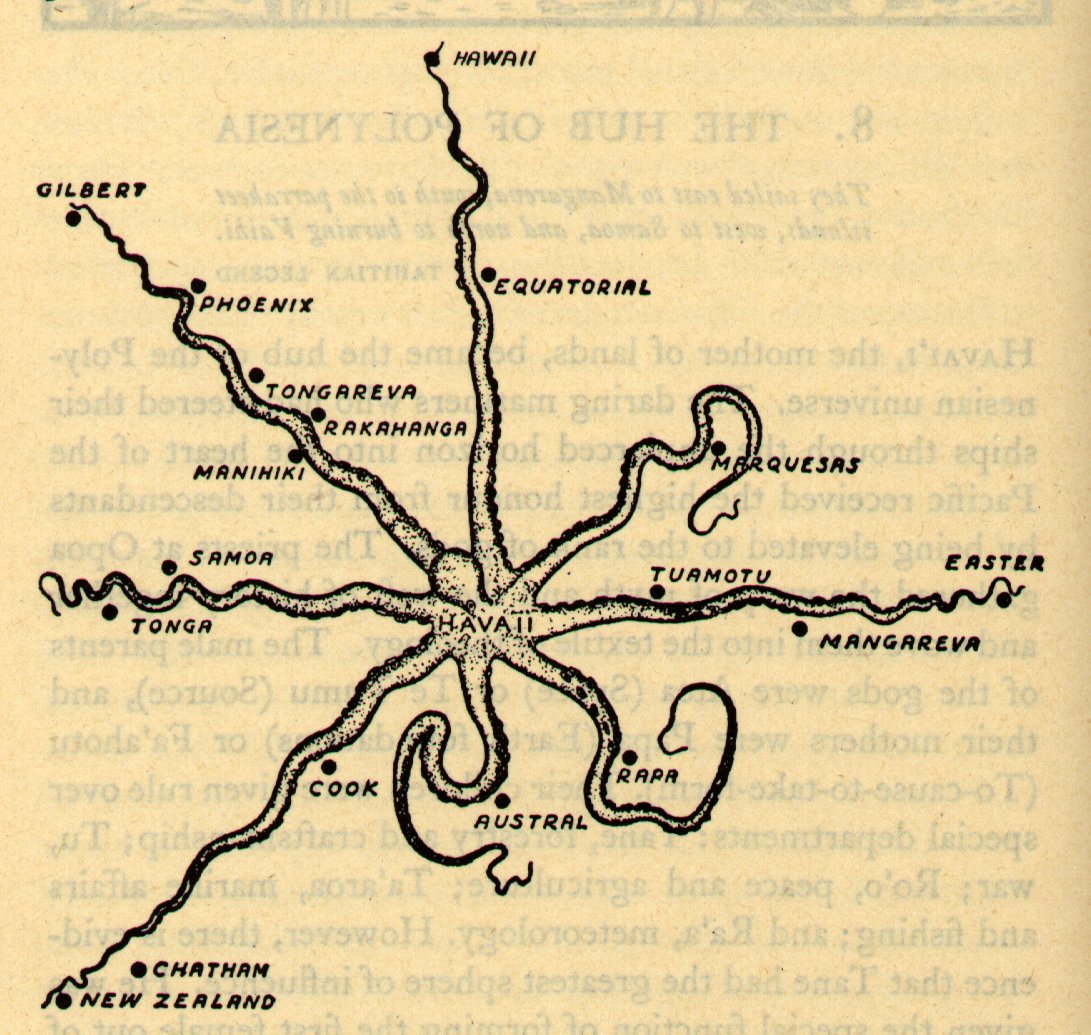... Easter Island (te pito o te kainga) is the last of all known islands. Seven lands lie before it, but these do not recommend themselves for settlement. Easter Island is the 'eighth land' (te varu kainga). Actually, we are dealing here with a figure of speech because 'seven' and 'eight' used as qualifying quantities play a traditional role in Oceania (Barthel 1962a). While the number seven is known as a topos in MQS., HAW., and MAO., the topos of the number eight goes far beyond eastern Polynesia (MQS., HAW., TAH.). In TON., the number eight is 'a conventional term signifying many or a well-balanced number' (McKern 1929:17), and on Malaita in the southern Solomon Islands, the physical world in its entirety is referred to as 'eight islands (wālu malau) (Ivens 1927:400).
The number eight not only means 'many' but also denotes perfection. Thus, when Easter Island was called 'an eighth land', the expression contained first of all the idea of a 'last' island - an island farthest away from the rest of the islands that make up the oceanic world. At the same time, the expression indicated a special position among the other islands. The idea of groups of seven, which are surpassed by an eight element, seems to belong to the cosmology of Asian high cultures. For example, there are seven planets circling the world axis, which represents the eighth, and therefore central, position ...
The text creator may have intended Ca2-1 to have a shape which would recall the idea of an octopus and I think Metoro read this glyph correctly when he told Bishop Jauseen it was 'the octopus' (te heke).
I furthermore suggest it alludes to the Octopus:
... Long ago in the very beginning of time there dwelt within a shell an infant god whose name was Ta'aroa. He was Ta'aroa the unique one, the ancestor of all gods, the creator of the universe whose natures were myriad, whose backbone was the ridgepole of the world, whose ribs were its supporters. The shell was called Rumia, Upset.
Becoming aware at last of his own existence and oppressed by a yearning loneliness Ta'aroa broke open his shell and, looking out, beheld the black limitless expanse of empty space. Hopefully, he shouted, but no voice answered him. He was alone in the vast cosmos. Within the broken Rumia he grew a new shell to shut out the primeval void.
Eons passed and Ta'aroa grew to be a lad conscious of his own vigor and potentialities. Impatience grew upon him until he could bear his isolation no longer. He broke forth from his shell with energy, resolved to create beings like himself who would banish his loneliness forever.
Ta'aroa's first act was to construct a firm foundation for the earth, using the strong second shell for stratum rock. The shell Rumia became his dwelling place, the overarching dome of the sky. It was a confined sky enclosing the world just forming, and in its deep and abiding night the lad attained manhood. There were no Sun, Moon, or stars and only one other living creature, the Great Octopus ...
With his 8 legs an octopus was suitable for drawing maps, with 45º from one tentacle to the next:
